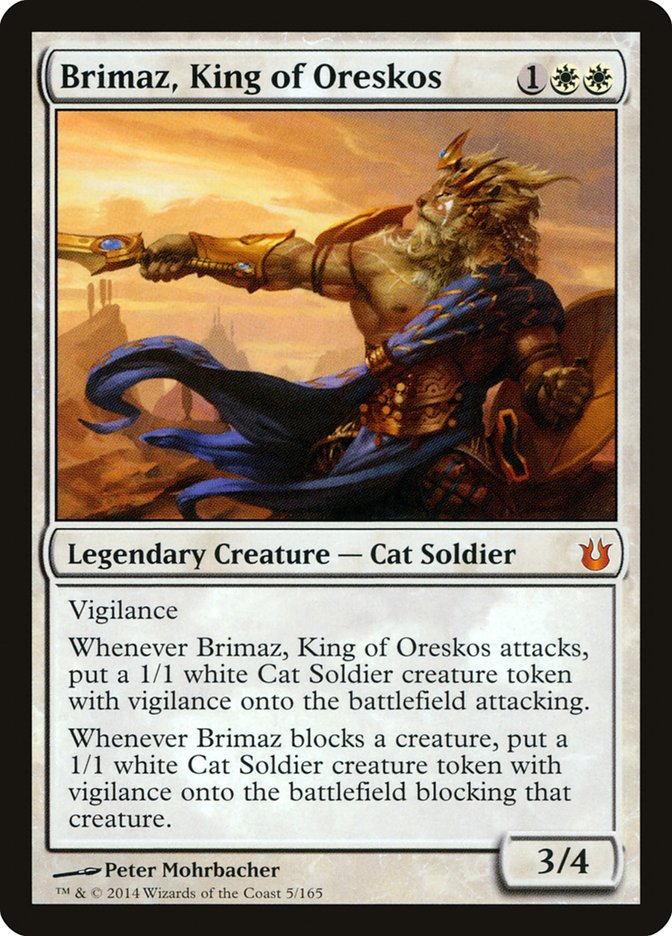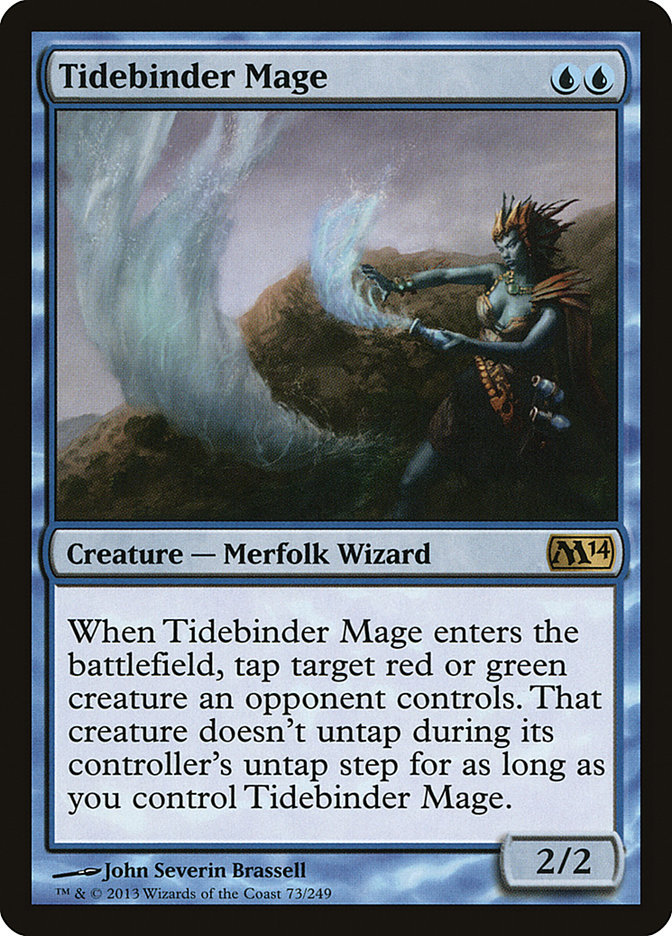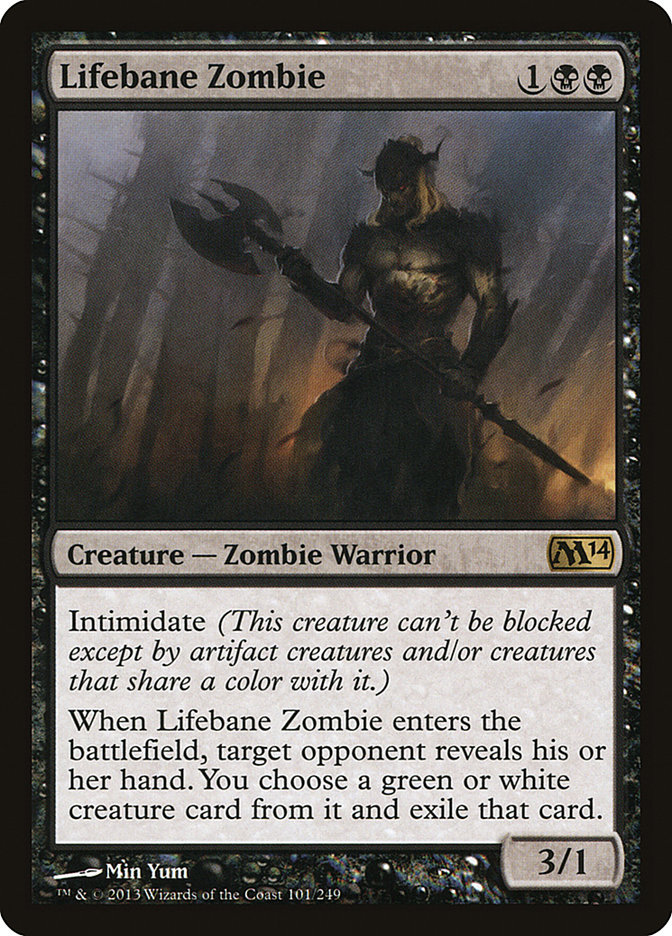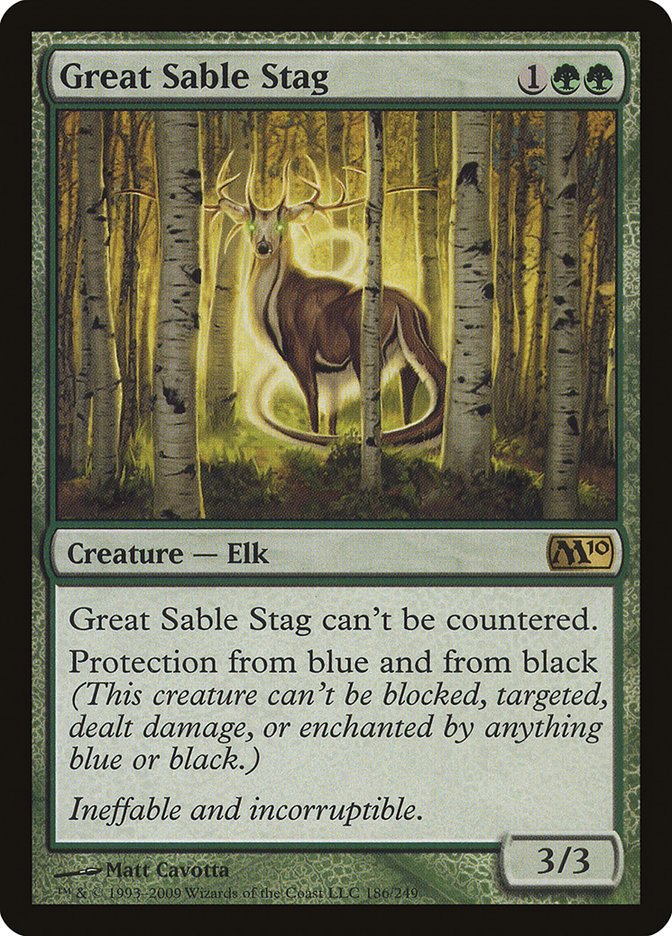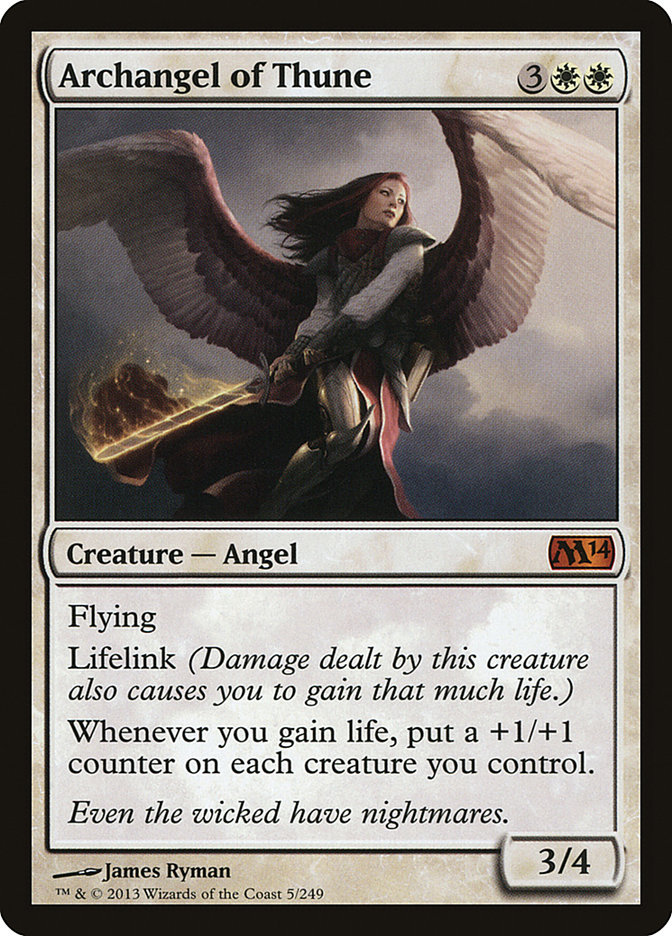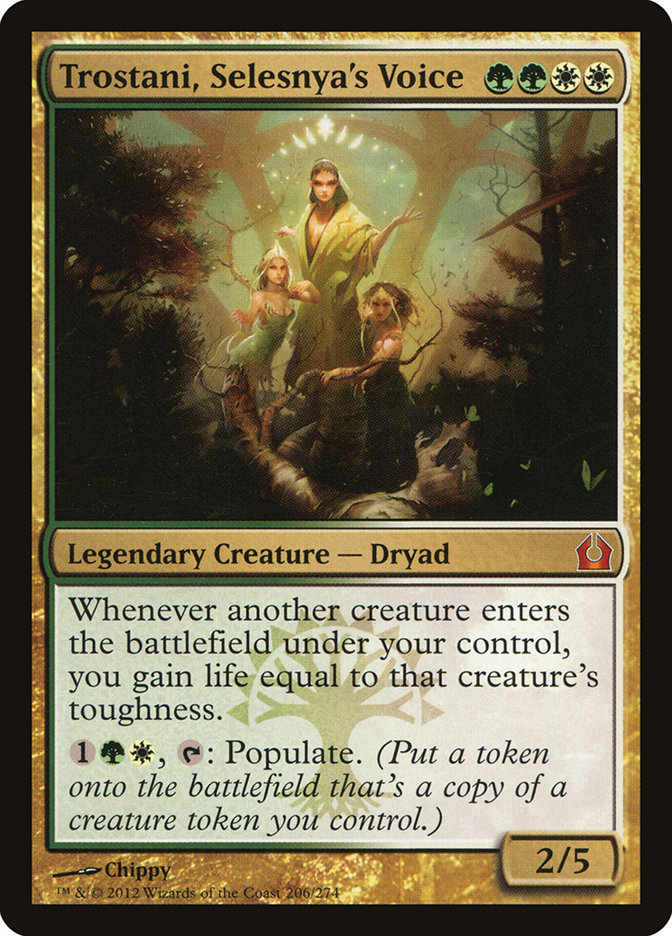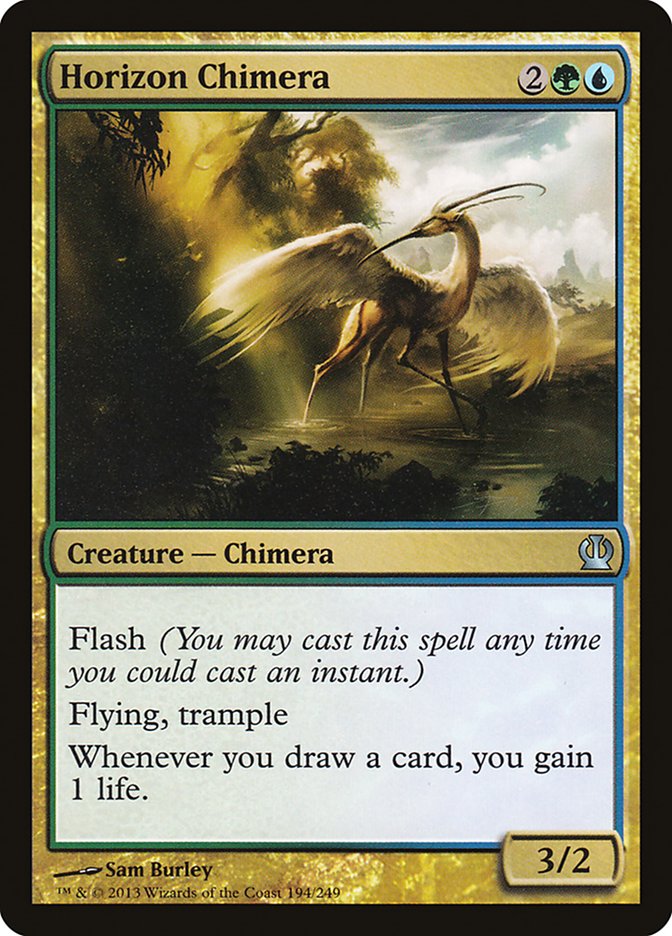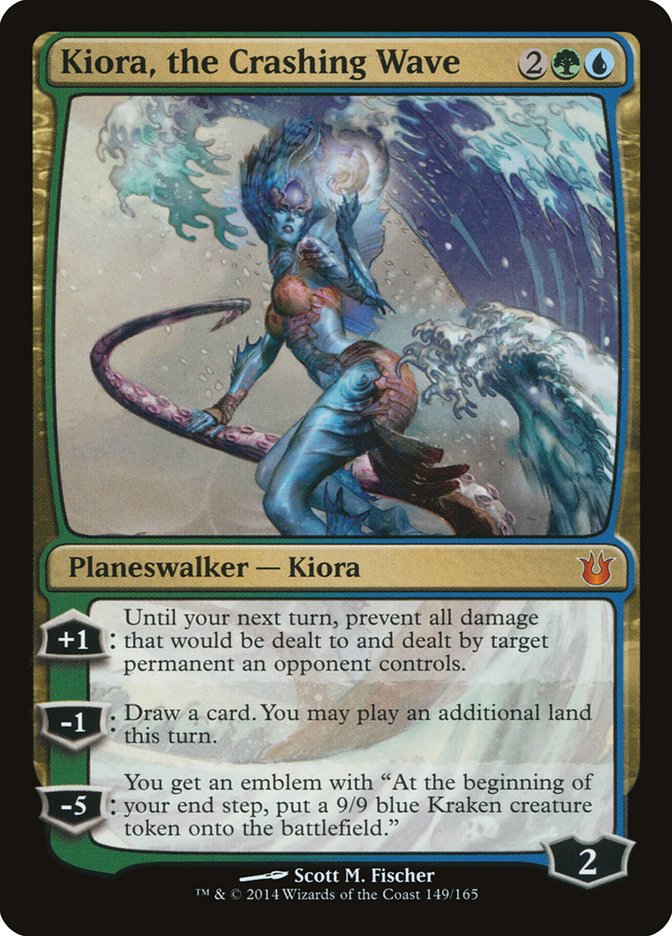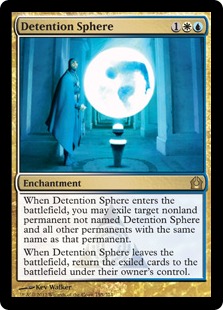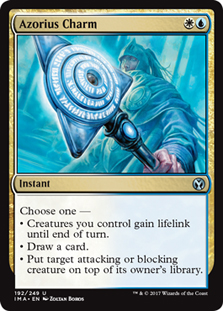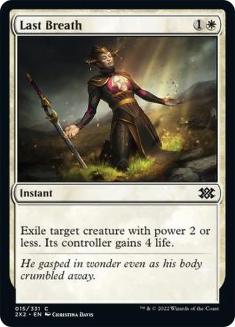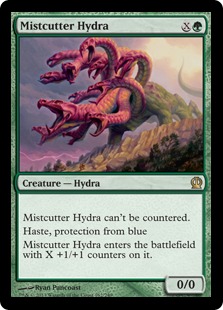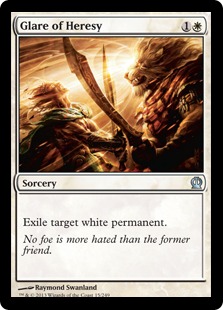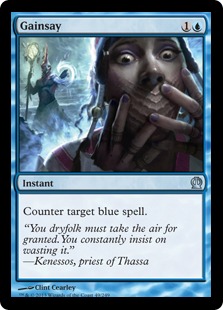I rarely miss an opportunity to brew G/W decks in a new Standard format, and this week will be no different. Selesnya cards tend to rank at the top of my list of favorite Standard-legal cards, which inspires me to try to find them a home.
G/W decks of all shapes and sizes also got a fantastic new addition in the form of Brimaz, King of Oreskos. I can only assume that this card becoming legal makes G/W-based strategies better because the color combination gets to add another Top 10 power level card to its ranks.
I just can’t wait to be king.
First things first, I can’t imagine playing any combination of green and white in the same deck and not utilizing Brimaz. In the experiences I’ve had playing with and against the card, it’s my opinion that it is way ahead of the power level of other cards at that cost and makes combat very difficult for the opponent.
If Brimaz, King of Oreskos is the bomb and Selesnya is full of awesome cards, how come the strategy isn’t taking the world by storm already?
Thanks for the fun cards.
Both of these cards are obnoxious in that they punish particular strategies unreasonably hard.
I usually enjoy having hoser sideboard cards like Choke, Stony Silence, Blood Moon, or Red Elemental Blast legal in formats to nerf narrow or linear strategies from their axis of attack. In fact, I wish that Wizards would print more of this type of sideboard card.
My problem with Lifebane Zombie and Tidebinder Mage is twofold. Firstly, neither of these cards is subtle. They are aggressively costed creatures that immediately set up a two-for-one on the board.
Most other hoser cards are a powerful effect that enchants the board (like Choke and Karma) or an instant or sorcery that cheaply removes or counters a spell of a color at a mana rate much cheaper than normal (like Celestial Purge and Red Elemental Blast).
Lifebane Zombie and Tidebinder Mage are just aggressively costed creatures that create a two-for-one on the board just by virtue of entering the battlefield. There is nothing subtle about these cards; the best colors in Standard are blue and black, and most of the decks you play against will have three or four copies of at least one of these cards.
When playing a G/W deck against Mono-Blue Devotion, Mono-Black Devotion, or any deck that has Tidebinder Mage or Lifebane Zombie, that card becomes the most important dynamic in the game.
Tidebinder Mage and Lifebane Zombie are so good against G/W that they are simply the best card in either deck by a wide margin and whether or not the opponent draws that card or how many they draw defines wins and losses.
Life is hard for Selesnya mages. I strongly dislike that the presence of Tidebinder Mage and Lifebane Zombie have in large part made G/W-based strategies unplayable or at least underplayed in Standard.
The second part of my argument for why Lifebane Zombie and Tidebinder Mage should not exist in the current Standard is that the green, white, and red M14 hate creatures are nowhere near on par with the black and blue ones.
One of the biggest reasons why Mono-Blue and Mono-Black Devotion are so good is that they get to play the best sideboard creatures in the format and there are no equivalent creatures in other colors to repay the favor.
Imagine how different the format would look with a realistic green or white hoser creature in the format.
1GG, Elvish Fisherman
Creature — Elf
When Elvish Fisherman enters the battlefield, you may choose to have it fight target blue or black creature.
3/3
1WW, Sainted Knight
Creature — Human
Protection from black, protection from red
4/1
Or what was wrong with:
Here, a deer.
Anyway, the point is that when playing G/W we’re fighting an uphill battle right from the start because of cards like Tidebinder Mage and Lifebane Zombie.
The first thing that I thought about when I started to build my G/W decks was that if most of my creatures tended to be white rather than green Tidebinder Mage would be less useful against me. Brimaz is also a white creature, which made me want to lean heavier on white mana.
The first lists of G/W I put together were pretty bad and didn’t seem to be able to beat very many things, which was a little discouraging. I just wanted to play as many of the best G/W cards as possible, but these cards collectively don’t seem to match up well against anything.
So I decided to pick an angle and work for synergy rather than play a bunch of individually powerful cards.
Creatures (22)
- 2 Scavenging Ooze
- 2 Trostani, Selesnya's Voice
- 4 Voice of Resurgence
- 4 Archangel of Thune
- 2 Polukranos, World Eater
- 4 Soldier of the Pantheon
- 4 Brimaz, King of Oreskos
Lands (26)
Spells (12)
Sideboard

This list is good at being a midrange deck and has some really nice ways to go over the top with Trostani and Archangel, which also happen to combo quite nicely with one another.
I have been having quite a bit of success playing the deck in testing and have been really impressed with how well it performs post-sideboard against many of the best decks in the format.
Free wins.
The card that has really impressed me more than any other is Archangel of Thune. The card plain and simple equates to a lot of free wins. There are a lot of decks that simply cannot beat an Angel once it gets going.
The same can be said of:
So many Voices in this deck.
Trostani is another card that if it gets active against half of the field the game is simply over on the spot. The ability to populate Wurm tokens is backbreaking, but the added value of making Knights or Cats is also useful if you can’t get a Wurm.
I’ll admit that W/G Tokens is a little midrangey, which will make it unappealing to many players. I tend to like midrange decks when the time is right to play them. Because it is close to the start of a new format, there are likely to be more beatdown decks floating around than one would find later on in a format, which makes W/G Tokens a potentially nice choice for a tournament.
The other cool thing about building with G/W cards is that the Conclave can really bring the beats!
Creatures (33)
- 4 Dryad Militant
- 4 Loxodon Smiter
- 4 Experiment One
- 4 Voice of Resurgence
- 2 Skylasher
- 4 Fleecemane Lion
- 3 Boon Satyr
- 4 Soldier of the Pantheon
- 2 Brimaz, King of Oreskos
- 2 Spirit of the Labyrinth
Lands (23)
Spells (4)

G/W Aggro does exactly what a player would expect: it beats down.
I like Spirit of the Labyrinth quite a bit against Sphinx’s Revelation decks. It is a great card to cast after the opponent casts Supreme Verdict but before they cast their namesake card.
With U/W Control being so popular right now, I also expect Divination to start seeing more play. A turn 2 Spirit of the Labyrinth that prevents a turn 3 Divination from the control player is a pretty sweet deal! Don’t forget that the Spirit hits for three damage per attack, which is an outstanding rate for two mana to begin with. The fact that it can randomly steal a game or two against opponents who need to cast a draw spell to function is all upside.
G/W Aggro is nothing new in Standard, and a few players have had success at high levels playing the deck.
My other favorite G/W-based deck has to be the Bant deck that I have been working on. I know it isn’t straight G/W, but it has G/W in it and gets to play the G/W cards that I like.
Creatures (14)
Planeswalkers (4)
Lands (25)
Spells (17)
Sideboard

Sticking with my theme of really liking Archangel of Thune, I found that Horizon Chimera is a powerful card to pair with the Archangel.
Limited gem. Constructed gem?
I own a gigantic stack of Horizon Chimeras because I’m pretty sure that I have never ever passed one in Theros Draft.
First pick Wingsteed Rider. Second pack has Wingsteed Rider and Horizon Chimera. Well, it looks like U/G is open again! Time to move in.
In all seriousness, U/G was my favorite archetype to draft in triple Theros, and Horizon Chimera was one of the strongest reasons to play those colors.
Playing with Horizon Chimera started off as a joke, but the more I thought about it, the more I actually like many of the things the card has to offer in the Standard metagame.
First of all, flash creatures are really good against control decks. Secondly, flying creatures with three power are particularly useful at attacking planeswalkers.
I also like how the life gain ability of this card makes it very good against burn decks.
The biggest incentives for playing Chimera are the interactions between it, Sphinx’s Revelation, and Archangel of Thune.
Do you know what happens if you cast a Sphinx’s Revelation with an Archangel of Thune and a Horizon Chimera in play? You gain a ton of life, your creatures get huge, and you win the game.
The last Bant deck that I’d like to quickly touch on is the Bant Walkers deck that has been floating around lately. Brian Braun-Duin played it to a nice finish at the SCG Standard Open in Nashville, and quite a few players around me have been talking about it.
Here is my tune-up of Bant Walkers.
Creatures (1)
Planeswalkers (8)
Lands (27)
Spells (24)
- 1 Last Breath
- 1 Syncopate
- 1 Negate
- 2 Divination
- 4 Azorius Charm
- 4 Supreme Verdict
- 3 Detention Sphere
- 4 Sphinx's Revelation
- 3 Dissolve
- 1 Unravel the Aether
Sideboard

The main changes that I made to the deck were to make it a little bit better in the U/W Control mirror, which appeared to be an axis of concern for it (at least in my opinion).
I made room for two Divinations, one Aetherling, and one Negate in the maindeck by way of cutting a few redundant planeswalkers and removal spells. I noticed at the PTQ I played in last weekend that I boarded in Negate against every single deck I played against, so I don’t have any issue with starting it.
More impressive than I thought.
I played the deck at FNM last Friday, and a couple of people saw I was playing with Kiora and later on in the evening asked me if I ever got to ultimate her. My answer was that she basically goes ultimate more often than she doesn’t.
I was really surprised at how easy it was to make this card go off and how powerful her +1 ability was at stabilizing the board. There was actually one game against a burn deck where I chose to use her +1 ability instead of her ultimate because she was locking down a problematic Chandra’s Phoenix that a Kraken wouldn’t have been able to block!
I also really wanted Aetherling in my deck, and the fact that it wasn’t actually cost me several games. You see, I had the Aetherling in my deck before the tournament and ended up changing it into the third Elspeth the morning of. I only own three copies of Elspeth (two Japanese and one English), and every time I drew the English one it would have been better as Aetherling!
To be honest, I played against so many control decks that Aetherling would have been better than most of my cards in most of my rounds.
BBD’s sideboard plan for the mirror was to bring in creatures and hope that the opponent boarded in a way that was weak against Brimaz and Archangel. I don’t think that this plan is very good now, especially because people are expecting it.
My plan for the mirror match is to leave in most of my Supreme Verdicts and board out my Detention Spheres.
Out:
In:
Basically, my line of thinking is that Glare of Heresy punishes opponents for leaving in Sphere as well as boarding in Archangel and Brimaz.
Detention Sphere becomes a gigantic liability because every single time it gets blown up it is the equivalent of casting a planeswalker for two mana. Giving your opponent the opportunity to make two-mana planeswalkers is not smart.
Everybody has at least Revoke Existence and is planning to board it in. Also, if you board out all of your artifacts and enchantments, you make their sideboard cards completely blank since they will have no targets.
While Bant Walkers is technically more of a U/W deck that splashes green, it still plays Temple Garden, which makes me a fan!
Selesnya is my favorite guild as well as my favorite color combination in all of Magic largely because it is so wildly diverse. Temple Garden is in all of the decks in this article, and the scope of those decks ranges from all-in aggro and token midrange to fish-style flash and hardline control.
G/W may not ever end up being at the very top tier of Standard (at least not as long as Tidebinder Mage and Lifebane Zombies are around), but the color combination still provides deckbuilders with a ton to think about.
Sometimes the best way to get involved in a new format is to start by brewing the kind of deck that you like to play. Even if it doesn’t turn out to be the best in the format, working intimately with a deck teaches you a lot about what the other good decks are doing, how they work, and why they are good.
I learned that the G/W cards are better than I thought and that I look forward to playing them in the upcoming weeks!

